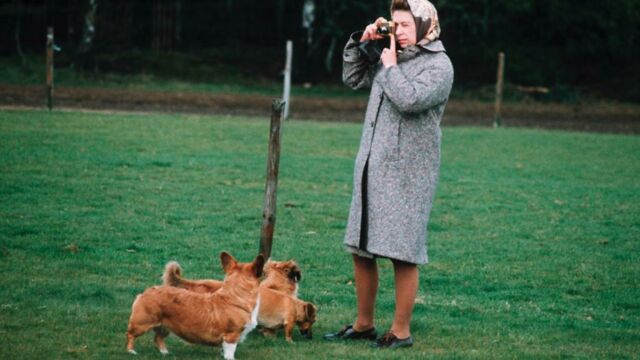Queen Elizabeth II owned hundreds of animals, what will happen to them now?

The Queen's passion for corgis was world famous. But did you know that she owned hundreds more animals? Here is what will happen to them now.
Queen Elizabeth IIwas a Patron of over 30 animal charities, from the RSPCA to The Red Poll Cattle Society and Battersea Dogs & Cats Home since 1956. And she owned hundreds of animals besides her adorable corgis.
Discover our latest podcast
These are the surprising species the late monarch was in love with. What will happen to them now that she’s gone?
Horses
The Queen’s love for horses has been one of her most well-documented passions throughout her life. She received her first horse aged just four. A Shetland pony named Peggy was given to her by her grandfather. Upon the death of her father, The Queen inherited his stables and his stock of magnificent racing and breeding horses. She rode almost every breed of horse but made a commitment to only ride native ponies later in life in support of Britain’s native pony breeds.
More under this adMore under this adHer breeding stock included Highland, Shetland and Fell ponies. The Queen continued riding horses well into her 90s. She owned more than 100 horses including two she was given on the occasion of her Platinum Jubilee – one from French President Emmanuel Macron and another from the President of Azerbaijan, Ilham Aliyev.
Royal biographer Claudia Joseph said:
It is likely that the Queen’s daughter, Princess Anne, and [Anne’s] daughter, Zara, who were both Olympic equestrians and well-known horse lovers, will be involved in what happens next to the Queen’s animals.More under this adMore under this ad
Pigeons
The Queen maintained a huge flock of 200 pigeons and did so throughout her reign. She inherited the birds and the passion for them from her father and grandfather who adored racing pigeons.
More under this adMore under this adThe Royal pigeons have done a lot more than simply race, however. In the First and Second World Wars, they carried messages between commanders and their troops. When not involved in military pursuits, they were competing in the racing season, which runs from April until September.
It’s not yet known who will take care of the Royal pigeons following the death of the Queen. King Charles III has announced that her former patronages will be shared among other royals in a process that could take several years.
More under this adMore under this adSwans
According to a tradition dating back to the 13th century, Queen Elizabeth II owned virtually all the unclaimed swans in England, My London writes.
Though today it’s rare for swans to be served at the dinner table, some 800 years ago in England eating them was a mark of status. To make sure no one could own or eat these birds without paying the monarchy for the privilege, an elaborate system of marks was developed to track swan rights. By default, though, the king or queen owned the country’s swans, and that’s still true. Any unmarked swans swimming in the open waters of England belonged to the Queen.
More under this adMore under this adAs King Charles III has taken the throne, he will be the new owner of these swans.
David Barber, the Queen’s swan marker of 30 years said:
The King has the right to claim any swan swimming in open waters, unmarked if he so wishes.
Sources used:
- Mail Online: 'Her Majesty's love of creatures, great and small! Charming photographs capture how the Queen's face lit up with animals'
More under this adMore under this ad- Metro: 'What happens to The Queen’s dogs and horses now?'
- My London: 'Royal Family: The unexpected sport The Queen's a huge fan of that isn't horse racing'
- My London: 'The Queen's Death: What happens to England's swans as Prince Andrew takes the corgis'
Read more:
⋙ Here’s why Queen Elizabeth II’s handbag was essential for her, according to royal insiders
⋙ The Queen wanted a not so ‘boring’ funeral, claims ex-archbishop
⋙ Queen Elizabeth II's most iconic looks throughout her 70 years on the throne